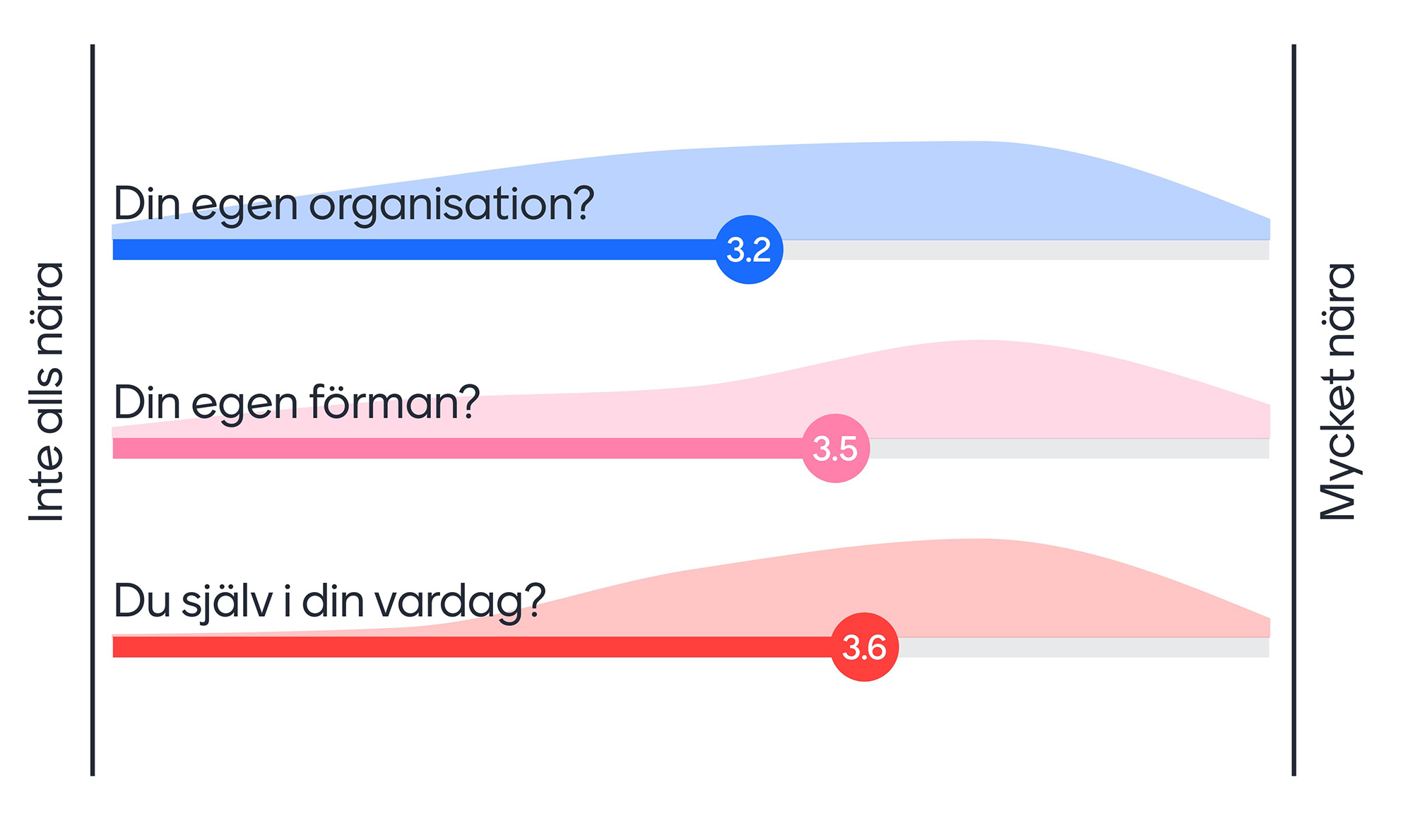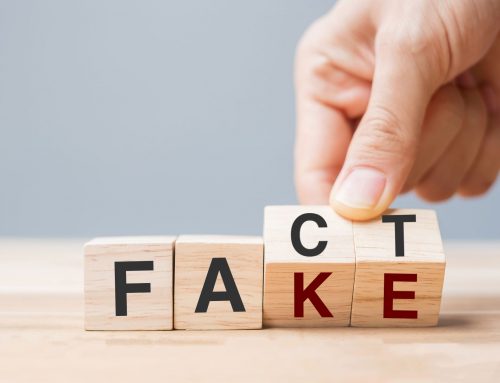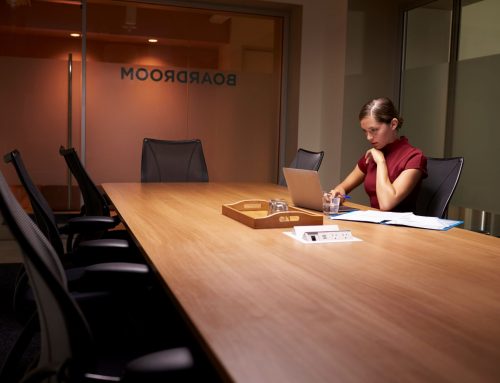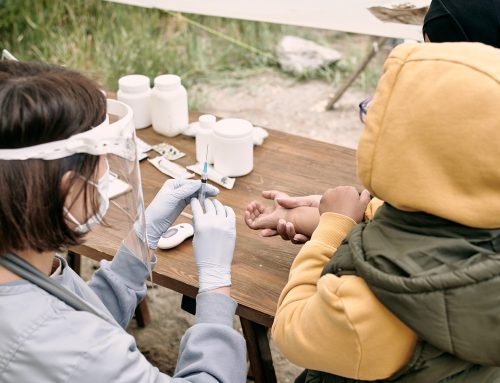Written by Christina Dahlblom.
In the middle of the second corona spring, as a newly appointed Professor of Practice at Hanken, I was given an inspiring assignment: to give a keynote at the first joint alumni event for Hanken, Arcada, Novia and Åbo Akademi University. The theme was Leadership in Change, an eternal and increasingly topical theme in the wake of corona. And at the same time: heavily researched and slightly worn out, with fewer and fewer universal solutions, as the complex and fast-changing world creates increasing needs for unique solutions, rather than the application of previous models and examples.
However, the context and audience were new: alumni from four leading Finnish schools. A unique network in the Finnish business community, with tentacles all over the world. An ecosystem with great ability to influence in Finland!
Although we love to complain about our country and its decision-makers, Finland is top ranked in many areas with relevance for creating a healthy, well-functioning, productive work life. We are good at e.g. equality, transparency, anticorruption, education, healthcare, happiness. Could we be the world’s best at leadership as well?
What is the best leadership in the world like?
How does one define the world’s best leadership? The list of attributes identified in different studies is long, and includes many of the attributes that alumni identified during the event. The alumni lists were topped by the terms inspiring, inclusive, listening, empathetic, coaching, and engaging.
How did the alumni think we are currently doing in what they defined as the best leadership in the world? Half-decent, you might say, especially concerning their view of their own organisations. The respondents gave themselves better grades than their own superior or
organisation. On all levels, there seems to be room for improvement if we aim to become the world’s best at leadership!
‘Work harder’ or ‘Sleep faster’ needs to be ‘Work smarter’
Challenging all of us to work to become the world’s best at leadership may sound like a joke, but the underlying need is dead serious. More and more employees, and more and more managers, both in Finland and all over the world, are feeling unwell at work. Their work makes them sick and incapacitated – an unsustainable situation.
We are at a breaking point in human history; more and more tasks can be carried out by machines. But instead of it making life easier, many find themselves in a situation where they feel chained to their computer screens, in a race with the machines to react to impulses in different channels. We spend more and more time learning how to manage our own reactions, our stress levels and our overcrowded calendars.
High performance in working life has often been driven by mantras such as ‘Work harder’, or as Arnold Schwarzenegger coined on his visit to Finland a few years ago, ‘Sleep faster’. We are doomed to lose this competition to the robots, so we need to ‘work smarter’. Then we also need to lead smarter, both ourselves and others.
So how could we work and lead better, towards having the best leadership in the world? Every situation, organisation and individual needs to find its unique solutions, but let me share some basic thoughts from the alumni event.
- Accept that everything is transparent, and perishable. In today’s world, few things can be hidden in the long run, and any attempt to hide something is a risk. Hiding things requires time, both for the person who is hiding them, and for those who are trying to find the information. A successful brand today may be destroyed tomorrow, when unpleasant, hidden information is leaked into some channel, internally or externally. This distributes power in new ways; from seller to buyer, from employer to employee, from large to smaller. At best, it drives us all, both organisations and individuals, to improve and make better, wiser and more sustainable choices and decisions. Transparency is often perceived as cumbersome, but what if we would dare to focus on the benefits, and perhaps work even harder for more transparency? Several of the companies that have been rewarded as having the best cultures are already pioneers in this genre, with e.g. transparently available cost statements and salaries.
- Once everything automatable becomes automated, the real competitive advantages arise by successfully attracting the best people, and building the best teams of them. We have known this for a long time, but what may be changing is how we define ‘the best’. Expertise and experience are good, but many today believe that even more important is the ability to collaborate and the ability to learn, ‘learnability’. Our school system has been a world leader for a long time, but could we get even better at teaching our young people these metaskills; how to learn, and successfully interact with others?
- We live in an ‘experience economy’, where competitive advantages are best achieved by creating excellent experiences. This means both the employee and customer experience have to be high on everyone’s strategic and everyday agendas. In that order: at least in the service industry, and at least in the longer term, good customer experiences and a strong brand are born and sustained only if the staff experience has first been good, and spreads into the customer interface. In this sense we are all ‘culture producers’. If you want to work in the best cultures, you must also be a good cultural producer, who brings positive energy to work. The curling generations have high demands on their working environment, and here I do not mean ping-pong tables and fruit baskets, but culture and ambiance. They also have lower tolerance for poor leadership, and an important stage in cultural design may be adopting a ‘no assholes’ policy, with zero tolerance for bad or unpleasant behaviour.
- If you have managed to get the ‘best’ to work in well-functioning teams, there is every reason to enable as much autonomy as possible. All research shows the positive impact of autonomy on motivation, creativity, well-being and productivity. But the energies need to be directed so that everyone strives towards the same, intended goals. Rather than trying to control, direct and measure behaviours, it may pay off to think about what kind of “channels” we can build to guide energies and efforts in the right direction, and what kind of obstacles we need to clear when something hinders progress? Easy to say, but in practice, many organisations’ leadership systems are still based on a command-and-control mindset.
- People in organisations are connected by different nodes, and the more complex an organisation is, the more nodes will exist. Each node enables interaction, but also creates risks of inertia and overload. In many organisations there are hierarchical “hourglasses”, where different managers interact with each other. In today’s fast, knowledge-intensive world, having many hourglasses may prove costly and time-consuming. So instead of hourglasses, we need to create tunnels, where knowledgeable individuals get to collaborate freely, depending on how they can contribute. Many organisations are, of course, already well under way with such experiments. But at the highest level, in the board work, development seems to be lagging and brave experiments of new ways of working seem rather scarce. Let’s hope we will see many courageous owners transforming boards into expert bodies, who, in close collaboration with the operatives work for positive development and value creation.
- We are all mediums, conveying different messages on an ongoing level, whether we enjoy the role or not. Our managers’ messages is among those we listen to and trust most. Silence is also interpreted as a message, especially now that we don’t see each other in the office as we used to. So we all have reason to think about what kind of medium we want to be. What are my messages, channels and audiences? What is my frequency and tone of voice, and who can help me formulate my messages? How do I communicate so that I reach even those generations who rarely read texts, and whose focus lasts only as long as a TikTok video?
Alumni want to see more openness, communication and transparency
The alumni also got to give their views on what we need to change. At the top of the wish list was more openness and transparency, communication and responsiveness, reduced hierarchy, control and fewer assholes.
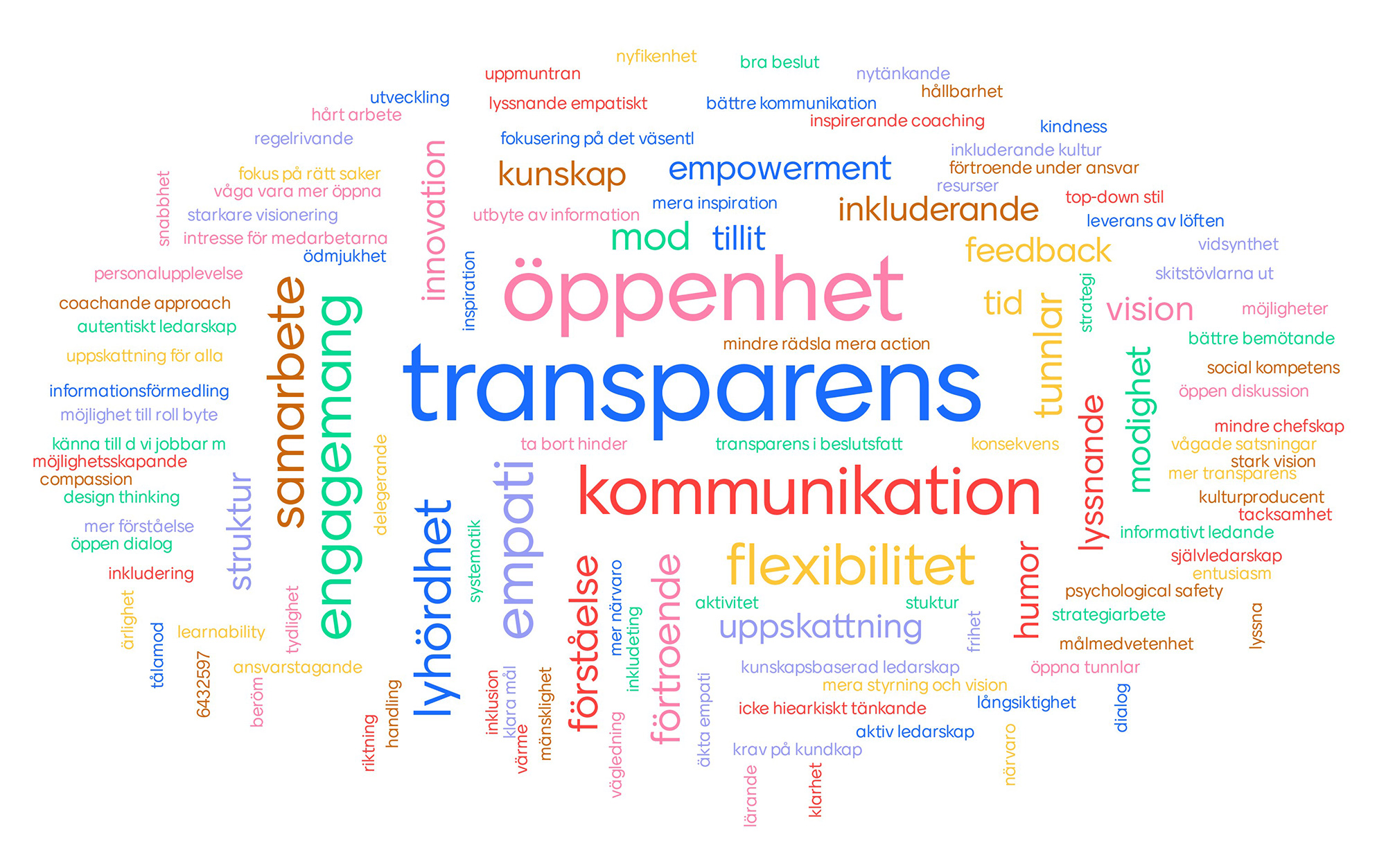
Alumni answer to ‘What changes do you want to see in the leadership of your organisation? Mention something you want to see MORE of.’ (n=205)
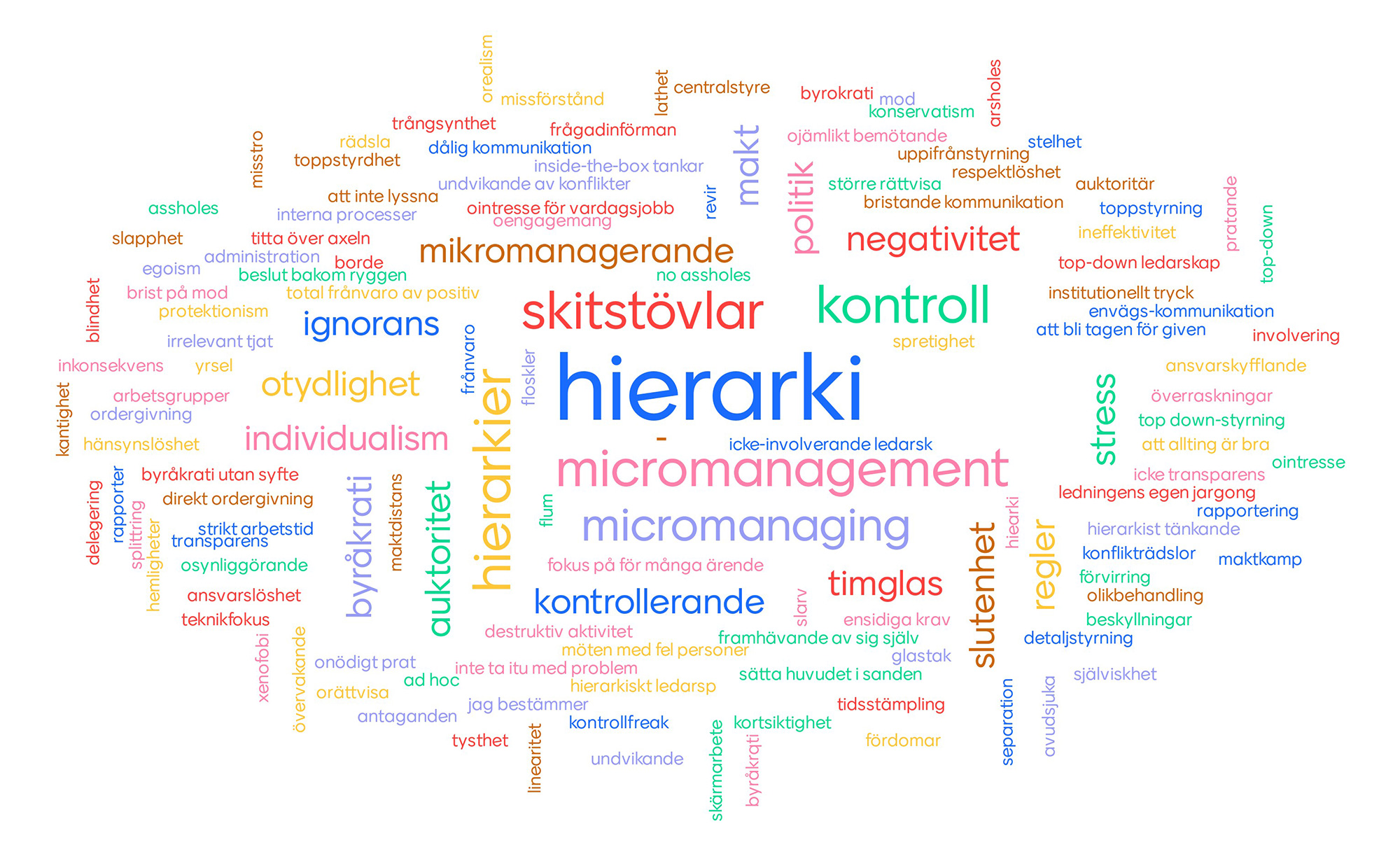
Alumni answer to ‘What changes do you want to see in the leadership of your organisation? Mention one thing you want to see LESS of.’ (n=184)
Start by becoming the world’s best at educating students in the meta-skills of working life?
The list of expectations and demands for leaders is endless, and none of us can live up to all of them. But we can learn to get better at harnessing our own strengths, navigating our weaknesses, interpreting what is required of us in different situations, and interacting with the people around us. Most organisations today invest in supporting their staff with courses and tools for this, but we could use the same skills much earlier, and especially during our studies or when we take our first steps in working life. More and more young people and students are suffering from stress-related mental challenges; this negative spiral needs to be broken.
Perhaps we should divide my challenge of getting Finland to be world-leading at leadership, into one challenge for us alumni in worklife, and another for our schools? Could schools invest in providing students with stronger support from an early age to develop the ability to lead both themselves and others in a changing world? Perhaps a first step towards becoming the world’s best at leadership, could be to become the world’s best at equipping our students with the meta-skills for a good working life and good leadership? All of us alumni, can contribute by setting the bar high in our organisations and our own leadership. And in practice: try every day to make wise small choices, that will lead us towards an increasingly sustainable and successful worklife and leadership.
Text: Christina Dahlblom
Images: Mentimeter


